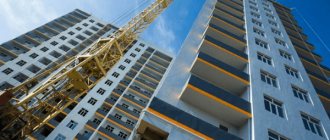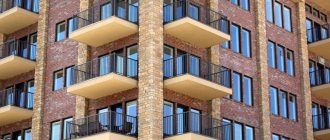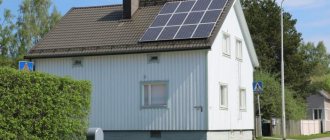Current legislation allows a citizen to count on improved living conditions. However, this is possible if the accounting norm for the living space per person is less than the established requirements. The value of the indicator is also established in accordance with the law. It must be taken into account that there are sanitary and social standards.
The concept affects the number of people who can live in the premises, as well as the ability to claim additional meters. Not everyone can improve their living conditions. The list of persons who have such a right is reflected in the current legislation. We will talk further about the rules in accordance with which citizens are given additional premises, the amount of standards in accordance with which a person can apply for improved living conditions, as well as who is provided with housing benefits.
When do you need to calculate the living standards? How is it determined?
There are several cases when the standard for living space must be taken into account.
- If necessary, confirm the tenant’s right to receive additional space.
- When temporary residents move in.
- Relocation of the tenant during major renovations in the building.
- The real estate property is being divided.
- The tenant is being evicted.
- You need to pay rent for living space.
The Housing Code of the Russian Federation has Article 50, which is devoted to this issue. This text states that the accounting standard for the area of residential premises is the minimum size of the area of living premises, on the basis of which the level of provision of citizens with the total area of living premises is determined in order to register them as those in need of residential premises. The indicator remains at different levels in different regions and subjects. In the constituent entities of the Russian Federation, responsibility for setting individual standards falls on the shoulders of local authorities. The size of such a norm cannot exceed the size of the provision norm established by this body.
Regional standards for standard residential area
To date, three regional standards have been adopted at the regional level, used to calculate subsidies for housing and utilities: a regional standard for the standard area of living premises, a regional standard for the cost of housing and communal services, and regional standards for the maximum allowable share of citizens' expenses for paying for housing and utilities. utilities in total family income.
Decree of the Government of the Chelyabinsk Region dated July 20, 2016 No. 351-P “On regional standards for the standard area of residential premises used to calculate subsidies for the payment of residential premises and utilities, and the maximum permissible share of citizens’ expenses for payment of residential premises and utilities in the total family income » the following regional standards for the standard area of residential premises used to calculate subsidies have been defined:
- 18 sq. meters of total housing area - for one member of a family consisting of three or more people;
- 21 sq. meter - for one member of a family consisting of two people;
- 33 sq. meters - for citizens living alone;
- 54 sq. meter - for a citizen living alone who has reached the age entitling him to receive an old-age pension;
- 36 sq. meters - for one member of a family consisting of two people who have reached the age entitling them to receive an old-age pension, or consisting of a single mother and one minor child;
- 24 sq. meters - for one member of a family consisting of a single mother and two minor children.
The regional standard for the maximum permissible share of citizens' expenses for housing and utilities in the total family income is set at:
11% - for citizens in whose families the total family income per month does not exceed the subsistence level by more than 20%, and living in families that include:
- only citizens who have reached the age giving the right to receive an old-age pension (women over 55 years of age, men over 60 years of age), or citizens living alone who have reached the age giving the right to receive an old-age pension (women over 55 years of age, men over 60 years of age) years);
- three or more minor children;
- single mothers with one or more minor children;
22% - for citizens, in other cases.
1. Decree of the Government of the Chelyabinsk Region No. 140-P dated April 19, 2021 “On regional standards for the cost of housing and communal services in the Chelyabinsk Region for 2021”
| Regional standards for the cost of housing and communal services in the Chelyabinsk region for 2021 | |||||||
| in rubles per person per month | |||||||
| No. | Name of municipalities of the Chelyabinsk region | Regional standards for the cost of housing and communal services in the Chelyabinsk region for 2021 for users of residential premises in the state or municipal housing stock, tenants of residential premises under a rental agreement in a private housing stock and members of a housing cooperative, housing construction cooperative, other specialized consumer cooperative, which residential premises are provided in accordance with the requirements of the legislation of the Russian Federation before they acquire ownership rights to such residential premises | |||||
| from January 1 to June 30, 2021 | from July 1 to December 31, 2021 | ||||||
| during the heating season | during the inter-heating period | with equal payment throughout the year | during the heating season | during the inter-heating period | with equal payment throughout the year | ||
| 15 | Chelyabinsk urban district | ||||||
| for 18 sq. meters of total housing area per month | 2584,04 | 1753,69 | 2290,03 | 2584,04 | 1753,69 | 2290,03 | |
| for 21 sq. meter of total housing area per month | 2860,54 | 1853,58 | 2479,31 | 2860,54 | 1853,58 | 2479,31 | |
| for 24 sq. meter of total housing area per month | 3137,03 | 1953,47 | 2668,59 | 3137,03 | 1953,47 | 2668,59 | |
| for 33 square meters of total housing area per month | 3966,52 | 2253,14 | 3236,43 | 3966,52 | 2253,14 | 3236,43 | |
| for 36 square meters of total housing area per month | 4243,02 | 2353,04 | 3425,72 | 4243,02 | 2353,04 | 3425,72 | |
| for 54 square meters of total housing area per month | 5901,99 | 2952,38 | 4561,41 | 5901,99 | 2952,38 | 4561,41 | |
| Note: official Internet portal of legal information pravo.gov.ru | |||||||
| Regional standards for the cost of housing and communal services in the Chelyabinsk region for 2021 | |||||||
| in rubles per person per month | |||||||
| No. | Name of municipalities of the Chelyabinsk region | Regional standards for the cost of housing and communal services in the Chelyabinsk region for 2021 for owners of residential premises in apartment buildings who, in accordance with the requirements of the Housing Code of the Russian Federation, are required to make contributions for major repairs | |||||
| from January 1 to June 30, 2021 | from July 1 to December 31, 2021 | ||||||
| during the heating season | during the inter-heating period | with equal payment throughout the year | during the heating season | during the inter-heating period | with equal payment throughout the year | ||
| 15 | Chelyabinsk urban district | ||||||
| for 18 sq. meters of total housing area per month | 2584,04 | 1744,33 | 2280,67 | 2584,04 | 1744,33 | 2280,67 | |
| for 21 sq. meter of total housing area per month | 2860,54 | 1842,66 | 2468,39 | 2860,54 | 1842,66 | 2468,39 | |
| for 24 sq. meter of total housing area per month | 3137,03 | 1940,99 | 2656,11 | 3137,03 | 1940,99 | 2656,11 | |
| for 33 square meters of total housing area per month | 3966,52 | 2235,98 | 3219,27 | 3966,52 | 2235,98 | 3219,27 | |
| for 36 square meters of total housing area per month | 4243,02 | 2334,32 | 3407 | 4243,02 | 2334,32 | 3407 | |
| for 54 square meters of total housing area per month | 5901,99 | 2924,3 | 4533,33 | 5901,99 | 2924,3 | 4533,33 | |
| Note: official Internet portal of legal information pravo.gov.ru | |||||||
| Regional standards for the cost of housing and communal services in the Chelyabinsk region for 2021 | |||||||
| in rubles per person per month | |||||||
| No. | Name of municipalities of the Chelyabinsk region | Regional standards for the cost of housing and communal services in the Chelyabinsk region for 2021 for owners of residential premises in apartment buildings who, in accordance with the requirements of Part 2 of Article 169 of the Housing Code of the Russian Federation, are not required to make contributions for major repairs | |||||
| from January 1 to June 30, 2021 | from July 1 to December 31, 2021 | ||||||
| during the heating season | during the inter-heating period | with equal payment throughout the year | during the heating season | during the inter-heating period | with equal payment throughout the year | ||
| 15 | Chelyabinsk urban district | ||||||
| for 18 sq. meters of total housing area per month | 2443,64 | 1596,73 | 2133,07 | 2443,64 | 1596,73 | 2133,07 | |
| for 21 sq. meter of total housing area per month | 2696,74 | 1670,46 | 2296,19 | 2696,74 | 1670,46 | 2296,19 | |
| for 24 sq. meter of total housing area per month | 2949,83 | 1744,19 | 2459,31 | 2949,83 | 1744,19 | 2459,31 | |
| for 33 square meters of total housing area per month | 3709,12 | 1965,38 | 2948,67 | 3709,12 | 1965,38 | 2948,67 | |
| for 36 square meters of total housing area per month | 3962,22 | 2039,12 | 3111,8 | 3962,22 | 2039,12 | 3111,8 | |
| for 54 square meters of total housing area per month | 5480,79 | 2481,5 | 4090,53 | 5480,79 | 2481,5 | 4090,53 | |
| Note: official Internet portal of legal information pravo.gov.ru | |||||||
| Application | |||||||
| to the resolution | |||||||
| Government of the Chelyabinsk region | |||||||
| dated 04/19/2021 No. 140-P | |||||||
| Regional standards for the cost of housing and communal services in the Chelyabinsk region for 2021 | |||||||
| No. | Name of municipalities of the Chelyabinsk region | Regional standards for the cost of housing and communal services in the Chelyabinsk region for 2021 for owners of residential buildings | |||||
| from January 1 to June 30, 2021 | from July 1 to December 31, 2021 | ||||||
| during the heating season | during the inter-heating period | with equal payment throughout the year | during the heating season | during the inter-heating period | with equal payment throughout the year | ||
| 15 | Chelyabinsk urban district | ||||||
| for 18 sq. meters of total housing area per month | 1844,27 | 535,53 | 1297,47 | 1887,35 | 535,53 | 1321,95 | |
| for 21 sq. meter of total housing area per month | 2062,39 | 535,53 | 1424,46 | 2112,89 | 535,53 | 1453,26 | |
| for 24 sq. meter of total housing area per month | 2280,52 | 535,53 | 1551,45 | 2338,43 | 535,53 | 1584,57 | |
| for 33 square meters of total housing area per month | 2934,89 | 535,53 | 1932,42 | 3015,05 | 535,53 | 1978,49 | |
| for 36 square meters of total housing area per month | 3153,01 | 535,53 | 2059,41 | 3240,59 | 535,53 | 2109,8 | |
| for 54 square meters of total housing area per month | 4461,75 | 535,53 | 2821,35 | 4593,83 | 535,53 | 2897,64 | |
Federal norm standards
At the level of federal legislation, the rules are defined as follows.
6 square meters per person is the norm for living space, according to sanitary rules.
Social norms for total area are calculated as follows:
- If there is one tenant living alone, he is allocated an area equal to 33 square meters .
- 42 squares is the minimum required for two people.
- If a family consists of three people, then each of them should receive at least 18 squares . But in any case, they must receive at least 16 squares at their disposal .
Rules for providing housing with a larger area
When figuring out how many square meters are allocated per person in an apartment, you need to take into account that the calculations depend on a whole list of factors. The living conditions in a specific subject of the Russian Federation are taken into account, as well as the calculation of which specific norm is being met.
They come in several types, the list of which includes:
- social;
- accounting;
- sanitary
The same list must include the value of the average price per square meter in a particular region, as well as the type of housing for which the calculation is being made.
According to current legislation, the standard living space can be considered the number of meters per person. The authorities of the Russian Federation can independently establish regional standards for housing area or transfer this right to local government.
In accordance with the Housing Code of the Russian Federation, the size of the area per person cannot be less than 12 square meters.
When calculating the value of the indicator, not the total area of the premises should be taken into account, but the actual size of the living rooms.
What is a social norm? How is it calculated?
The social norm is the minimum necessary housing that must be allocated to the population when the housing stock is distributed among them.
Social norms reflect the minimum amount of space a person needs to live comfortably. This is the main reference point for those who are responsible for allocating housing subsidies and housing under other programs.
The norm is tied to several factors, including:
- Information about what types of accommodation premises belong to.
- Data on the provision of housing to the population, taking into account the characteristics of a particular region
- Information about how many people make up the family.
What to do if the area is less than the standard
If, as a result of the calculation, it turns out that the area in the apartment is less than the standard, registered persons can apply for improved living conditions. In practice, it is almost impossible to achieve real changes without the help of an experienced lawyer. That is why it is recommended to first consult with a specialist and only then, based on his recommendations, take certain actions.
Procedure
The procedure may vary slightly depending on the region and the specifics of the application. Below is a generalized version that is relevant for almost all situations:
- Check the established standard for living space with the real state of affairs. If, based on the results of the calculations, it turns out that for each registered housing there is less than required, you can move on to the next step.
Calculation example: Let's assume that the total area of the apartment is 50 sq.m. (can be viewed in the certificate of ownership, extract from the Unified State Register of Real Estate, registration certificate or purchase and sale agreement). A family of three lives in it. Each of them should have 18 sq.m. In total, the total area of the apartment should be 18*3=54 sq.m. At the moment, each person has only 50/3 = 16.7 sq.m., which is less than the norm, albeit a little. Under such conditions, you can try to register in order to improve your living conditions.
- Contact the housing inspectorate or social welfare authorities (it is better to check with the local administration where exactly to contact) and write an application for registration.
- After acceptance of the application, a date and time will be set for inspection of the housing to determine its compliance with standards and requirements.
- Ensure unimpeded access to the apartment for members of the commission at the specified time. It should be taken into account that, most likely, photography and video will be taken. You can refuse this, but it is better to be as loyal as possible to the specialists and allow them to do whatever they see fit (within reasonable limits, of course).
- Receive an inspection report.
- Based on the inspection report, if the conclusion suits the applicant, register. If you are not satisfied (and do not allow you to register), you can try to challenge the results of the premises inspection.
- Wait until money is allocated or resettlement becomes possible.
As practice shows, you can wait for your turn for several years. It is often possible to speed up the procedure with the help of an experienced lawyer.
Documentation
To submit an application you may need the following documents:
- Passport of the applicant and all members of his family. If you have not yet received a passport, then a birth certificate will do.
- Extract from the USRN for housing.
- Registration certificate for the apartment.
- Legal documents.
- Certificate 2-NDFL and other documents showing the financial condition of the family (not relevant in all cases).
Costs and deadlines
Registration to improve living conditions, as well as the inspection of the apartment itself, are free of charge. Costs may arise when collecting documents (for example, if you need to restore a registration certificate or a sales contract).
From the moment of submitting the application to the verification, it takes from several days to 2-3 months. On average - about 1 month. After the act is drawn up in accordance with all the rules and provided to the applicant, he will have 30 days to use it for its intended purpose (become registered). If this is not done, you will have to repeat the procedure, since the act will no longer be valid.
In addition, if for some reason the applicant is not satisfied with the document, he can challenge it within 10 days from the date of receipt of the document.
More information about calculation rules
Classic standards: 18 square meters per citizen, 42 square meters for a family of two, 33 square meters for those who live alone . And enters into a social rental agreement. According to the norm, one person should receive at least 12 squares . But this is only relevant for those who are recognized as in need of improved housing conditions.
These are citizens who live in apartments that do not comply with current standards. The norm is set by municipalities. They necessarily take into account the actual condition and current structure of the housing stock. The same applies to the number of premises that can be included in the housing stock to increase it.
Why and for whom are standards needed?
There are social categories of citizens whom the state undertakes to provide with housing. When allocating apartments to them, the norms established by law are applied.
These categories include:
- Orphans left without parental care . At the end of their stay in orphanages, foster families, military service or serving in prison, orphans are provided with comfortable housing. For the first five years, a social rental agreement is concluded with them, and then ownership is transferred.
- IDPs from houses recognized as unsafe and subject to demolition. If an apartment building is included in the resettlement program due to the impossibility of further living in it, the owners of the premises must be provided with other residential premises in return. Their value should be commensurate with previous values. Moreover, if the previous apartment is less than the established standards, citizens have the right to petition for improved living conditions. When resettling from a dilapidated building, families may be offered municipal housing or a dormitory, subject to current standards for the minimum housing index per person.
- Military personnel. The state guarantees the provision of housing to military personnel within the norms. An apartment can be transferred to your own use after years of service.
About the accounting standard for housing
Determined by local authorities. Calculation of this norm requires consideration of many factors:
- Demographic and social composition of registered families.
- Features of the housing stock itself.
- The provision of housing for the population in a particular region.
- And so on.
In each region, this norm has a certain size , which is determined individually. The accounting norm can be changed for specific groups of citizens, including military personnel and disabled people. But a decrease or increase in the accounting rate occurs only on the basis of a Federal Act. Important documents for this are the laws of the subjects themselves, or decrees of the President of the Russian Federation.
An accounting standard is needed to understand whether specific citizens need to improve their living conditions. In this case, not only the territory of living rooms is taken into account, but also the so-called common areas.
What is the minimum living space per person?
Considering everything said above, we can conclude that the minimum area allocated to 1 person cannot be less than 18 sq.m. It should be borne in mind that in this case we are talking about common, not living space. These are different concepts. So, for example, the total area of an apartment can be 60 sq.m., of which only 45 sq.m. are residential.
The rest of the space is the kitchen, bathroom, pantry, dressing room, and so on. Based on this, we can conclude that the actual living area of each resident will be less than 18 sq.m. It is assumed that the non-residential space assigned to it is the space occupied in the kitchen, bathroom, and so on.
Standards for various categories of citizens
The norm for military family members is 18 square meters per person. In practice, housing standards for this category of citizens are often increased.
The social norm for housing assistance is used when determining whether citizens are able to pay for housing and communal services themselves, or whether they require support. In a dormitory, the rate per person may be reduced depending on the decision of the municipality.
Eviction for debts to pay utility bills is an extreme measure that applies to those who live in an apartment or house under a social rental agreement. They are necessarily evicted to housing with a smaller area. The same standards are used here as when working with dormitories - that is, for example, 6 square meters per person.
When relocating from emergency housing, the norms are 6 square meters per person, if the municipal fund does not have enough funds to provide all conditions. In other cases, migrants can count on a minimum of ten square meters.
Those whose housing is seized for the benefit of state and municipal funds can count on the same standards, no less.
When is knowledge of the accounting standard for living space required?
When a citizen found out that the minimum housing standard for 1 person is 6 square meters. m., and learned that the value of the indicator in 2021 depends on its type and a number of other parameters, it is necessary to figure out when this information may be needed. Information is necessary if the amount of money that must be provided for housing and communal services is calculated.
If for some reason a citizen cannot independently contribute funds in full, the state can provide assistance in the form of subsidies. Their size is calculated according to how many square meters of housing there are per person.
Information is also necessary if a large debt has accrued for housing and communal services, and the family is evicted from their occupied living space. In this case, they will be provided with another apartment in compliance with the 6 sq. m. standard. m. per person.
Data is also required for relocating people from emergency housing. If the apartment has not been privatized, the payment will be made in accordance with the sanitary standard. If the action has been completed, the new room should not be smaller than the previous one.
Video
What else should you consider?
Over the past few years, this area in the legislation of the Russian Federation has undergone virtually no changes. If the norms become different, it is only within a specific region; the amount of change is rarely large. But more often than not, even other cities repeat the same rules that apply in Moscow.
Rationing of living space began in our country since the times of the USSR. And many of the rules in force at that time are still applicable to practice today. Even after changes, they are simply transferred to new documents. Only the government bodies responsible for editing in a given case change.
It is worth considering that some categories of citizens have the right to receive compensation. For example, if they and their family members were injured during the accident at the Chernobyl station. Compensation is especially relevant for those who are interested in the opportunity to save on utility bills. Labor veterans who permanently reside in housing stock also have this right. Regardless of what form of ownership they register for a particular object.
Many citizens can independently improve their living conditions. But for some, government support remains relevant. If there is an opportunity to get housing on preferential terms, why not take advantage of it?
Why you need to know this
Knowing what square footage should be for each person registered in the apartment will help with the following:
- Calculation of utilities. This is especially true if several people live in the same apartment, each of whom is required to independently pay part of the utility costs. Thanks to knowledge of the standard area, you can correctly divide payments into several parts.
- Determination of subsidy amounts. Relevant for low-income families. Based on existing space standards for each person, the size of the subsidy is determined. As a result, utility costs and financial burden are reduced.
- When moving from emergency housing. Owners of apartments in dilapidated buildings are moving to new buildings. Each owner is entitled to a certain area, which is based on both the existing size of housing (the area of an old apartment in a dilapidated building) and the standard area.
Example: If a large family lives in an apartment located in a dilapidated building, in which each resident has less than the standard area, when relocating these people can apply for more comfortable and larger housing.
- To conclude a social rental agreement. If a person for some reason loses their home and can apply for social real estate, area standards are used to calculate what apartment to provide to the person/family.
- To register for improvement of living conditions. The most common option. Many quite normal and prosperous families do not have the opportunity to purchase more comfortable housing. If they know the standard area allocated to each of the registered persons, they can apply for participation in government programs to improve housing conditions.
Among other things, knowing the area standards, you can more accurately allocate a share when dividing property, as well as calculate compensation when transferring your share to another person.
Is it possible to specifically reduce the area?
Some people, in order to improve living conditions even more, deliberately worsen them for the commission.
Example: Usually 2 people live in an apartment. The area available for each of them is quite sufficient and therefore such a family cannot register. But I still want to get a new apartment. In such a situation, they register other relatives in the housing in order to formally reduce the living space for each resident.
Despite the fact that the legislation does not clearly describe actions that may or may not be considered as deliberate deterioration of living conditions, most often each such situation is considered individually.
Based on the results of the review, if violations are identified, the applicant will be refused consideration of his application. Moreover, after such a refusal, he will not be able to participate in such government programs for the next 5 years. Regardless of whether his living conditions worsen due to natural reasons in the future or not.
In some cases, the deterioration is involuntary. The simplest example: a wedding and the birth of a child. There was enough space in the apartment for one person. After the wedding and the spouse moved in, it became not enough, but it was still sufficient, from the point of view of standards. But after the birth of the child, there was absolutely not enough space.
It is very difficult or even simply impossible to understand the standards, determine the area and achieve participation in the program for improving housing conditions without the help of an experienced lawyer. During a free consultation, qualified specialists will analyze the most important nuances and tell clients what they should consider first. Lawyers can also represent the interests of the applicant both when applying to government agencies and in court, if it comes to it.
FREE CONSULTATIONS are available for you! If you want to solve exactly your problem, then
:
- describe your situation to a lawyer in an online chat;
- write a question in the form below;
- call Moscow and Moscow region
- call St. Petersburg and region
Save or share the link on social networks
(
1 ratings, average: 5.00 out of 5)
Author of the article
Natalya Fomicheva
Website expert lawyer. 10 years of experience. Inheritance matters. Family disputes. Housing and land law.
Ask a question Author's rating
Articles written
513
- FREE for a lawyer!
Write your question, our lawyer will prepare an answer for FREE and call you back in 5 minutes.
By submitting data you agree to the Consent to PD processing, PD Processing Policy and User Agreement
Useful information on the topic
3
Living conditions inspection report
Living conditions in many families remain far from regulatory requirements...
1
Intentional deterioration of living conditions
Housing problems can be solved in different ways, one of which is...









